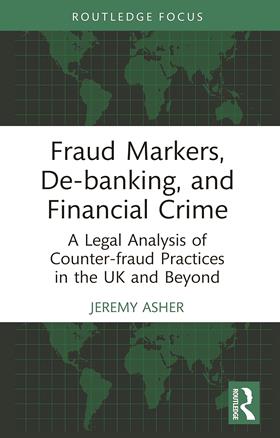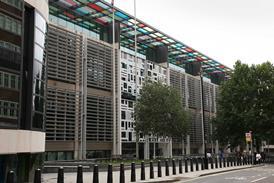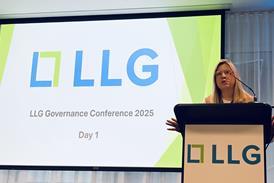Fraud Markers, De-banking, and Financial Crime: A Legal Analysis of Counter-fraud Practices in the UK and Beyond
Jeremy Asher
£52.99, Routledge
★★★★✩
According to a 2022 parliamentary select committee report, 41% of criminal cases involve fraud. An academic study in 2023 found that fraud could cost the UK economy over £200bn a year.
In response to this growing threat, the financial industry has developed fraud databases – and that data is now shared and used in a multi-agency, public-private partnership. Fraud markers provide, in theory, a reliable warning to financial organisations which are considering whether or not to provide financial services to an applicant, allowing them to stop transactions, put applications on hold, or close accounts (de-banking).
However, as practising solicitor Jeremy Asher reveals in this illuminating work, many innocent people can be adversely affected by mistakes made in the fraud marking process, or where they are themselves victims of fraud or identity theft, with little recourse to challenge or appeal. Asher gives vivid examples from his legal practice of disastrous financial consequences and, for some, personal tragedy, as a result of accounts being closed, credit denied, businesses failing, employment or accommodation lost. This is not a small-scale problem: in 2022, the Financial Conduct Authority confirmed that 343,000 bank accounts had been closed in the UK alone.

The main databases that are not held by law enforcement agencies are run by the likes of Cifas, Synectics Solutions, National Hunter, Experian and the Insurance Fraud Register. Regulation is patchwork: some are designated as anti-fraud organisations under the Serious Crime Act of 2007; some are members of the Joint Fraud Taskforce Management Board, chaired by the Home Office (which includes the British Bankers’ Association (now UK Finance) and the National Crime Agency); and some are regulated by the FCA. They have both differing investigative techniques and standards of proof. Asher decries the fact that Cifas, for example, which by 2021 was recording over £1bn of fraudulent transactions a year, has reduced its standard of proof from a requirement that the evidence must be ‘clear, relevant and rigorous such that the member could confidently report the conduct to the police’, to a standard no longer requiring that level of confidence.
Asher highlights the fact that an individual may be ignorant of the existence of a fraud marker, especially if they are a victim of fraud or identity theft, until it is too late to challenge. He is critical of the limited ability to challenge the fraud marking, in a process that is independent, impartial or fair, without recourse (in the case of a financial service) to the Financial Ombudsman Service.
Asher also addresses money laundering through the use of mule accounts, cryptocurrency and blockchains, and the fact that the superfast payment system in the UK allows criminals to wash money before detection is possible. Scams committed, for example using Snapchat, ensure that evidence disappears before the victim of fraud can retrieve it.
Much better education of customers, more rigorous training of investigators and complaints handlers, more investment in fraud-preventative measures by smaller financial organisations and the newer, challenger banks, along with a clear and simpler way to appeal decisions, are all sensible recommendations.
This introduction to the use of fraud markers and debanking in the context of fraud and money laundering will be useful not only to practitioners. It also raises urgent issues for the financial sector and its regulators to address.
Ed Vickers KC of Red Lion Chambers, London, specialises in fraud and money laundering, and is instructed more widely in serious and complex criminal cases































No comments yet